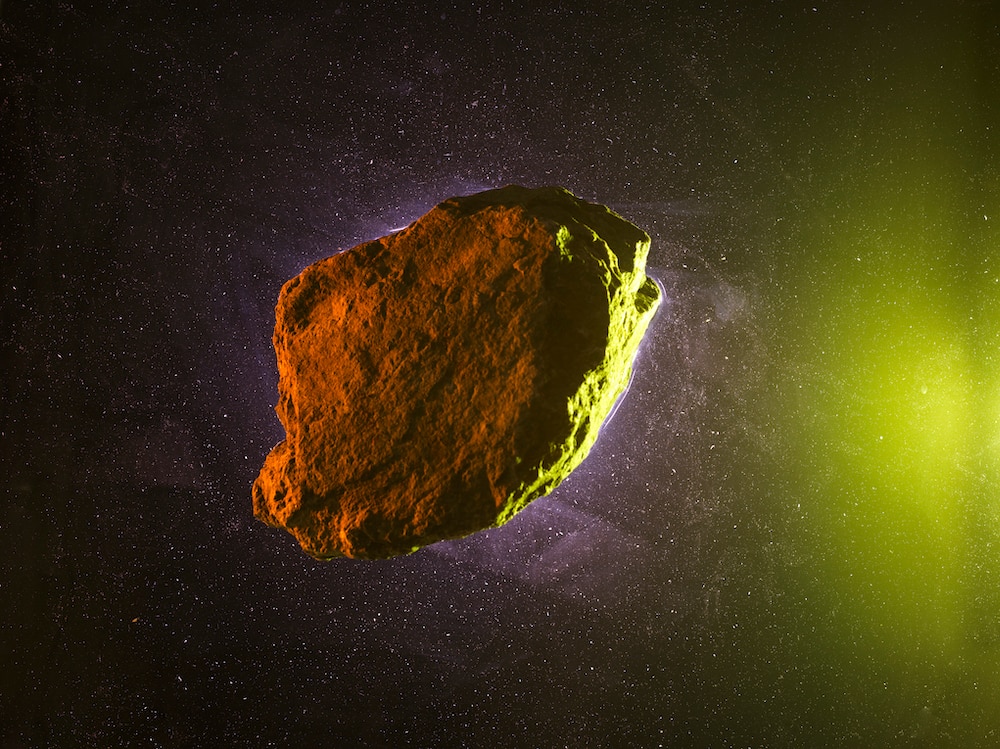Create a free profile to get unlimited access to exclusive videos, sweepstakes, and more!
OSIRIS-REx is now going to go asteroid hopping to the space rock that once threatened Earth
Yes, that asteroid.

Remember that asteroid that we almost thought was going to annihilate us? Apophis? Well, turns out we're gonna survive, and now NASA has decided to send OSIRIS-REx to check it out.
OSIRIS-REx is on its way back from the asteroid Bennu. It was already the first NASA mission to grab a sample from a near-Earth asteroid, after JAXA’s Hayabusa2 spacecraft headed to Ryugu. While the Ryugu dust has already touched down on Earth, we should expect samples from Bennu by September 2023. After OSIRIS-REx drops off the sample, it will head back into space as OSIRIS-APEX and seek out the infamous space rock that will end up flying so close to Earth that (depending on where you are) it will be visible without a telescope.
For now, planetary scientist Dante Lauretta of the University of Arizona is the principal investigator of OSIRIS-REx. The spacecraft still has unfinished business before embarking on its next quest. After the mission changes direction, planetary scientist Dani DellaGiustina, also of the University of Arizona, will become principal investigator of OSIRIS-APEX.
“Because of its flawless performance at Bennu during the prime mission, the spacecraft maintains enough resources,” DellaGiustina told SYFY WIRE. “Apophis is the ideal target because the spacecraft and payloads were designed to collect exceptionally high-resolution datasets of small asteroids."
Apophis will whiz by Earth on April 13, 2029 — which happens to be Friday the 13th — but we aren’t destined to live a real-life version of Asteroid vs. Earth just yet, even if it will be coming for us on an unfortunate date. There will be another close call (again on April 13) in 2036. Any fears that we would be smashed by a projectile from outer space were eventually extinguished, and it was taken off the list of potentially hazardous asteroids (PHAs). The specter of a crash landing might be why it was named for the ancient Egyptian deity Apophis, lord of chaos, but the thousand-foot asteroid will pass 19,662 miles from Earth's surface and keep on going wherever it’s going.
There is more danger on the horizon for Apophis than there is for us. Because it’s going to come close enough to run into Earth’s gravitational field, it could experience massive asteroid-quakes, and those really are a thing. Its orbit will also be slightly shaken up. Apophis takes a little less than a year to make its journey around the Sun, and it gets scorched because it can get as close as hell planet Venus before swinging out again. The gravity of larger objects and even effects from sunlight cause its orbit to shift here and there. DellaGiustina anticipates that the asteroid will have a rough time when it approaches.
"Apophis will be substantially affected by Earth's gravitational pull during its close encounter in 2029," she said. "This encounter is a relatively rare planetary event which will alter its orbit and rotation state and may disturb its surface, possibly causing landslides and other geological phenomena."
OSIRIS-APEX will be getting close enough to it to make unprecedented observations. Next September, it will pull off a maneuver involving a gravity assist from Earth that will fling it into an orbit around the Sun so the APEX mission can get going by 2025. When it ends up flying in a new orbit, OSIRIS-APEX will be closer to the Sun and heat up to a temperature slightly higher than it was built for, especially at perihelion (when it is closest to the Sun) but it should get through unscathed. It will need a few more gravity assists before it finally reaches Apophis' orbit just before the asteroid creeps close to Earth in 2029.
While the spacecraft won’t pick up a sample this time, it will fire its thrusters near the surface to expose some of the subsurface. What it beams back over the course of the 18 months that it will study the asteroid will be like opening a cosmic time capsule. Because asteroids are the relics of the early solar system, where everything was colliding with everything else, Apophis could tell us more about how things evolved and even how Earth became habitable.
"At Apophis, we know getting into orbit around such a small object will be a challenge," said DellaGiustina. "We are confident the spacecraft will survive these perihelion passes unscathed, but we'll closely monitor the spacecraft's health and performance following each pass."
Unlike Bennu, Apophis is an S-type asteroid. These are the second most common type of asteroids floating around in the solar system, outnumbered only by C-types. It is a rocky asteroid made of silica and other minerals. Some S-type asteroids are among the largest known and may have once tried to be planets when the solar system was young. Many asteroids are thought to have either been hunks of debris ejected in the wake of massive collisions or objects not able to accrete enough material to reach planetary status.
S-type asteroids like Apophis were not previously thought to have any water ice, which had only been observed on C-types, but two of the largest ones recently disproved that. It is possible that impacts with other objects or a gust of solar wind left water behind. DellaGiustina and her team will be able to see whether there is any water, which could be from billions of years ago, still on Apophis.
"Data of Apophis returned by the OSIRIS-REx spectrometers — which were designed to detect water — can help quantify the even small amounts of water that stony asteroids may have delivered to early Earth."
After leaving the Bennu samples behind, OSIRIS-APEX will take off for Apophis in October 2023.


























